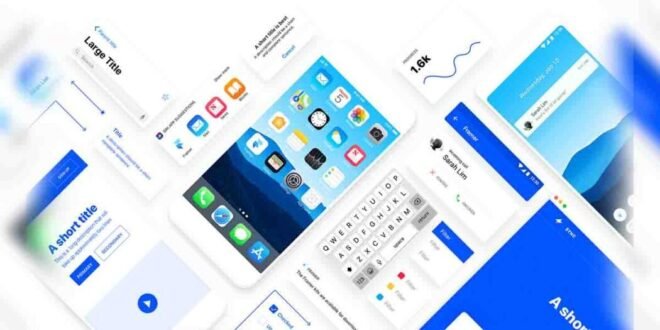Understanding Graphic Design and UI/UX
Differentiating Graphic Design and UI/UX
Graphic design focuses on visual communication through elements like typography, color, and imagery. UI/UX design involves creating user interfaces that are intuitive and provide a seamless user experience. Both fields collaborate to craft compelling digital experiences.
Importance of Visual Communication
Visuals play a crucial role in digital communication. Effective use of colors, typography, and imagery helps convey messages, evoke emotions, and establish brand identity. In UI/UX, visuals guide user interactions and enhance comprehension.
User-Centric Design Approach
UI/UX design centers on users’ needs and behaviors. By understanding user goals and preferences, designers create interfaces that are user-friendly, intuitive, and efficient, enhancing overall usability.
Principles and Elements of Graphic Design
Fundamentals of Graphic Design
Elements like color theory, typography, layout, and imagery form the backbone of graphic design. Understanding these elements aids in crafting visually appealing designs that effectively communicate messages.
Creating Visual Hierarchy
Visual hierarchy guides users’ attention through an interface. By prioritizing elements using size, color, contrast, and placement, designers control the flow of information and optimize user engagement.
Utilizing Contrast, Balance, and Proportion
Contrast, balance, and proportion are key to creating harmonious designs. Contrast enhances readability, balance ensures visual stability, and proportion maintains aesthetic appeal in both graphic and UI/UX design.
Strategies for Effective UI/UX Design
Designing for User Experience (UX)
UX design prioritizes usability, accessibility, and user satisfaction. Strategies include creating intuitive navigation, optimizing information architecture, and considering cognitive psychology principles for seamless interactions.
UI Design Best Practices
UI design focuses on the presentation and interactivity of an interface. Best practices involve responsive design, consistent layout, intuitive navigation, and the strategic use of interactive elements for enhanced user engagement.
Consistency and Branding in Design
Maintaining consistency in design elements and branding fosters familiarity and trust among users. Consistent use of colors, typography, and brand-specific elements across interfaces reinforces brand identity.
Tools and Technologies for Graphic & UI/UX Design
Graphic Design Tools
Tools like Adobe Photoshop, Illustrator, Sketch, and Canva empower designers to create visually appealing graphics. These tools offer functionalities for image manipulation, illustration, and layout design.
UI/UX Design Prototyping
Prototyping tools such as Figma, Adobe XD, InVision, and Axure RP enable designers to create interactive prototypes. These tools aid in visualizing and testing user flows and interactions early in the design process.
Integrating Design Systems
Design systems ensure consistency across designs and streamline collaboration among design teams. They include reusable components, design guidelines, and documentation for a cohesive user experience.
Designing for Accessibility and Inclusivity
Inclusive Design Principles
Inclusive design principles emphasize creating interfaces accessible to diverse user groups. Designers consider factors like disabilities, language barriers, and cultural differences to ensure inclusivity.
Accessibility Compliance
Following guidelines like Web Content Accessibility Guidelines (WCAG) ensures accessibility compliance. Adhering to these standards helps in creating interfaces that are usable by everyone, including people with disabilities.
Human-Centered Ethical Design
Ethical design prioritizes user well-being, privacy, and ethical technology use. It involves designing interfaces that respect user data, promote transparency, and prioritize user safety.

Measuring Success and Iterative Improvement
User Testing and Feedback
User testing and feedback loops involve gathering insights from user interactions and iterating based on user input. Analyzing user behavior and preferences helps in refining designs for better user experiences.
Key Performance Indicators (KPIs)
KPIs like conversion rates, engagement metrics, and user satisfaction scores measure the success of design strategies. These metrics guide design iterations and improvements based on user-centric goals.
Iterative Design Process
Design is an iterative process involving continuous observation, ideation, prototyping, testing, and refinement. Iterations based on user feedback and data analysis result in progressively improved designs.
1. What is the difference between graphic design and UI/UX design?
Answer: Graphic design focuses on visual communication through elements like color, typography, and imagery. UI/UX design involves creating user interfaces that are intuitive and provide a seamless user experience. Both work together to craft compelling digital experiences.
2. Why is visual communication important in digital design?
Answer: Visuals play a crucial role in conveying messages, establishing brand identity, and enhancing user experience. They help evoke emotions, guide user interactions, and improve overall comprehension in digital interfaces.
3. What are the key principles of graphic design?
Answer: Key principles include color theory, typography, layout, and imagery. Understanding these elements aids in crafting visually appealing designs that effectively communicate messages.
4. How does UI/UX design prioritize user experience?
Answer: UI/UX design focuses on usability, accessibility, and user satisfaction. Strategies involve creating intuitive navigation, optimizing information architecture, and considering cognitive psychology principles for seamless interactions.
5. What tools are commonly used in graphic and UI/UX design?
Answer: For graphic design, tools like Adobe Photoshop, Illustrator, Sketch, and Canva are popular. In UI/UX design, prototyping tools such as Figma, Adobe XD, InVision, and Axure RP aid in creating interactive prototypes.
6. What role does accessibility play in design?
Answer: Designing for accessibility ensures that interfaces are usable by diverse user groups. Adhering to accessibility standards (e.g., WCAG) creates inclusive designs accommodating people with disabilities and varying needs.
7. How do designers measure the success of design strategies?
Answer: Design success is measured using key performance indicators (KPIs) such as conversion rates, engagement metrics, and user satisfaction scores. These metrics guide iterative improvements based on user-centric goals.
8. Why is an iterative design process important?
Answer: The iterative design process involves continuous observation, prototyping, testing, and refinement based on user feedback. Iterations lead to progressively improved designs, enhancing user experiences.
9. How do design systems contribute to consistent interfaces?
Answer: Design systems include reusable components, guidelines, and documentation. They ensure consistency across designs and facilitate collaboration among design teams for cohesive user experiences.
10. What ethical considerations are important in design?
Answer: Ethical design prioritizes user well-being, privacy, and ethical technology use. Designers aim to respect user data, promote transparency, and prioritize user safety in their designs.
 Nt Design
Nt Design



